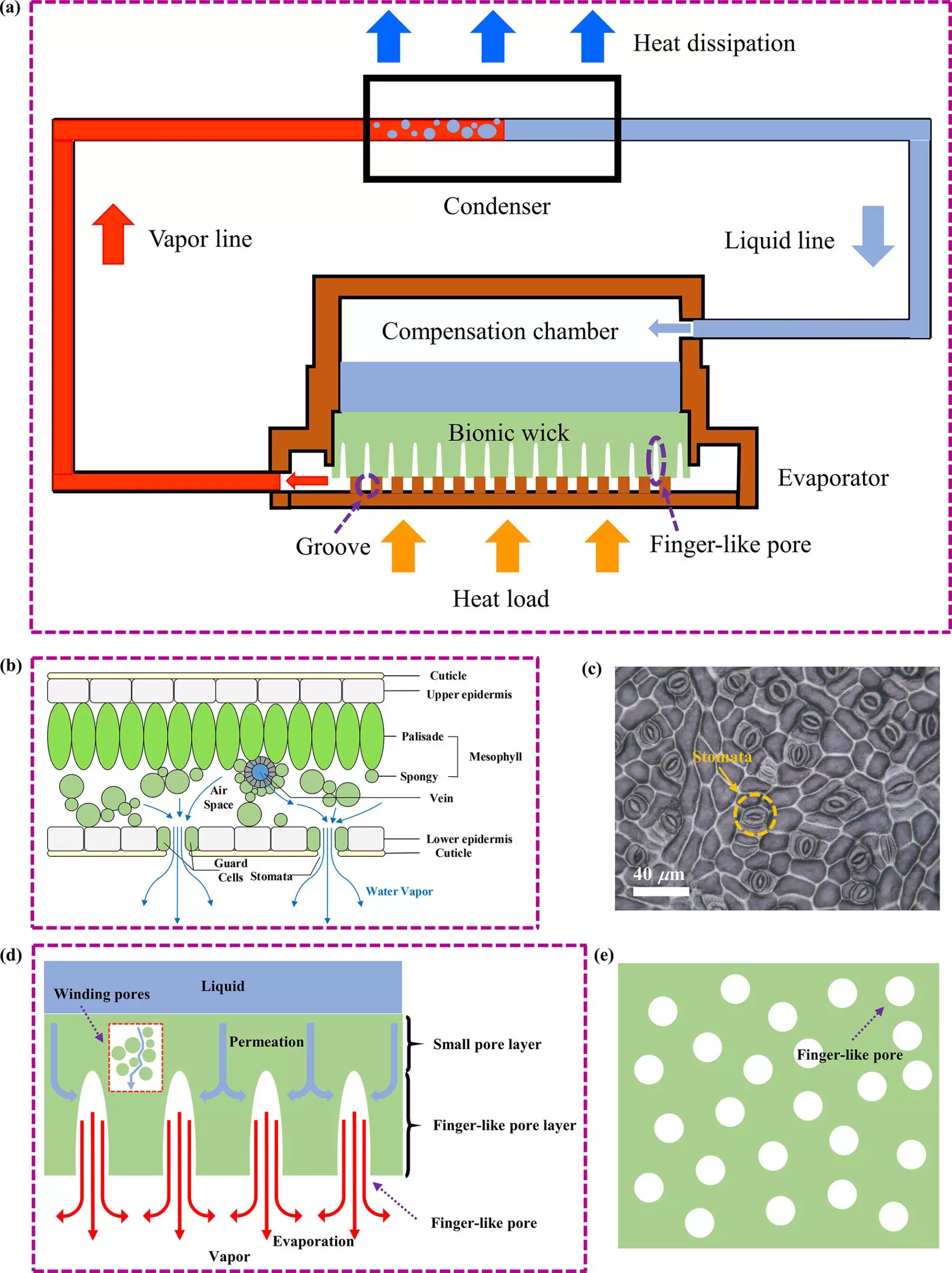In the ever-evolving world of technology, the performance of electronic chips continues to improve, leading to increased power consumption. This presents new challenges when it comes to effectively cooling these chips to prevent overheating. Traditional cooling strategies may no longer be sufficient to handle the high heat transfer requirements of modern electronic devices.
Prof. Ye Hong and his research team at the University of Science and Technology of China have developed an innovative solution to the cooling challenge. Inspired by the natural stomatal array of plant leaves, they have created an alumina ceramic bionic wick with finger-like pores. These unique structures are designed to mimic the efficient gas-liquid exchange system of plant leaves, allowing for superior heat and mass transfer capabilities.
One of the key issues in designing cooling systems for electronic chips is finding the right balance between flow resistance and capillary force. Larger pores are essential for reducing flow resistance for gaseous working fluids, while smaller pores are needed to maintain sufficient capillary force for liquid suction. This conflicting requirement has been a significant hurdle in the development of effective cooling solutions.
Taking inspiration from the stomatal structure of plant leaves, Prof. Ye Hong’s team was able to overcome this challenge. By using phase inversion tape casting techniques, they successfully created an alumina ceramic bionic wick with finger-like pore structures. These finger-like pores provide a large gas-liquid interface area for efficient expulsion of gaseous working fluids, while micron-sized pores surrounding them offer the necessary capillary force for liquid replenishment.
The start-up and operation tests of the Loop Heat Pipes (LHPs) equipped with the bionic wick have confirmed its superior heat and mass transfer performance. This breakthrough not only resolves the conflict between capillary force and flow resistance but also offers a promising solution for high-power-density electronic chip cooling. The potential applications of this technology extend to sectors such as aerospace, aviation, and microelectronics, where efficient thermal management is crucial for optimal performance.
The development of the alumina ceramic bionic wick represents a significant advancement in the field of electronic chip cooling. By drawing inspiration from nature, researchers have been able to overcome longstanding challenges and pave the way for more efficient and effective cooling solutions in the future.


Leave a Reply